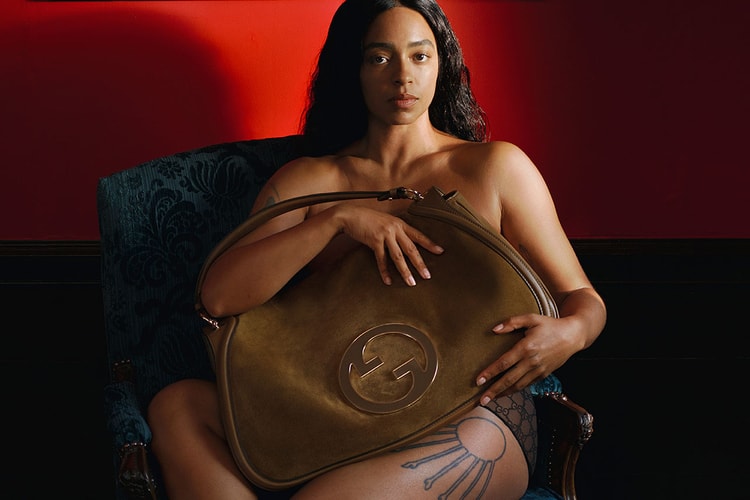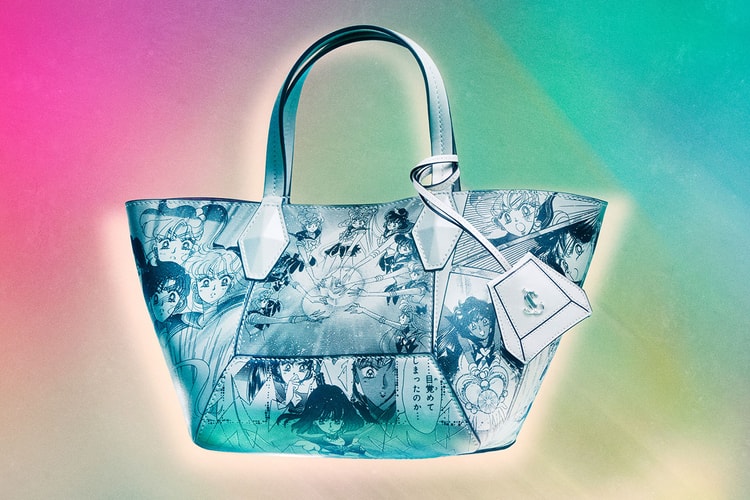What Actually Makes a Good Collaboration?
With countless team-ups resulting in graphic tees and tote bags saturating the market, how can brands continue to partner in a way that’s actually exciting?
Collaborations aren’t dead, but are they overdone? At one point in our lives, the concept of one brand collaborating with another was considered groundbreaking and game-changing. These days, it’s hard to believe there was ever a time for that to be true and now, there’s a deep-seated sense of fatigue whenever the word is used. With fashion week becoming an expected place for new collaborations to be teased and debuted, and “collaboration” used to describe anything from co-branded graphic tees and tote bags to 20-piece collections, it’s not hard to see why the word has lost a bit of meaning — and almost all excitement.
That said, a few team-ups do seem to stand the test of time and have kept the internet talking long after their initial releases. Names like Martine Rose, Wales Bonner and Jacquemus sit at the forefront here, still seeming to ignite financial panic and result in frantic reminders set whenever a new drop date is announced. Clearly, generating buzz and excitement with something that’s been done a million times before can still be done — but how?
What are the markers of a good collaboration? And is there a winning formula for brands and designers to follow to guarantee success? We took it upon ourselves to ask the experts.
According to EDITED, “Social media hype, rapid sellouts and an increased resale value are all indicators of a successful collaboration,” citing team-ups like Miu Miu and New Balance, LOEWE and On Running and MM6 Maison Margiela x Salomon as some of the most impactful of recent times.
“Another measure of success is collaborations that have evolved into long-running partnerships and repeated drops that continue to perform,” EDITED adds, with Converse x Comme des Garçons PLAY, Wales Bonner’s adidas and Nike x Jacquemus sitting at the top of that list.
With that in mind, it’s then up to brands to determine how exactly they’ll make a collaboration successful in the first place. The intention or aim has to be clear from the get-go, and that’s something that Aries founder Sofia Prantera knows a thing or two about. Since the brand’s inception, Aries has teamed up with everyone from Mia Khalifa to Malibu and each time, it’s for good reason.
“I was around when the first collaborations started coming along and we didn’t see it as a need for ourselves at that point, but it’s an effective way for both brands to create something new,” Prantera tells us in an interview. “It allows the other brand to go into territories that are more risky that they might have not been allowed to and the smaller brand to benefit from a level of communication that they wouldn’t otherwise have,” she adds.
“For us, the premise for most collaborations is about who there is that’s like-minded, that will help us with the investment and the visibility that we need but also feels organic and feels right,” Prantera continues.
Alongside a clear aim, it’s safe to say that a collaboration has to offer something new, and something that wouldn’t typically be seen outside of that specific partnership. “Good collaborations are the ones that tell more niche and nuanced stories that the mainstream consumer isn’t accustomed to seeing. The world has become tired of the same old people telling the same stories,” says Olu Alege, founder of culture and impact agency NO NOISE.
Speaking to creatives and designers who are more than familiar with the art of collaboration, we attempt to answer the question: what makes a good collaboration in 2024?
For us, it comes down to three core elements.
Surprise and Delight
Predictable collaborations don’t drive hype or desire. Expected logo placements and little variation to typical colorways aren’t enough to offer something new, and it’s easy to see when brands hike up the prices for a “collaboration” that’s actually just a subtle shift in colorway — for what seems like no real reason.
“For me, the best collaborations are the most unexpected. I love seeing two distinct universes come together, elevating one another,” explains Cecilie Bahnsen, a designer who has successfully reinvented classic ASICS silhouettes time and time again, making actual history with her recent ASICS’ GEL-QUANTUM 360 VIII.
Team-ups like Palace and McDonald’s and GCDS and Hello Kitty also sit in this category, merging two often varying aesthetics and communities that may not otherwise have intersected. In these instances, fashion labels join forces with an arguably more high-profile brand with a recognizable aesthetic. Similarly, New Balance’s snoafer debut on the runway with Junya Watanabe taps into this element of surprise, showcasing a brand new silhouette that likely would’ve driven hype all on its own – also emphasizing the importance of taking a product that’s already made an impact and building on that.
Brand Synergy and Brand Opposition
While there is no one winning formula, a good collaboration typically goes one of two ways: either bringing together the similar audiences of multiple brands or bringing together two brands with totally different audiences. Usually, we see brands come together who are of equal weight in varying spaces (food and fashion, or footwear and fashion, for example) or of differing weight in the same space (ie emerging designer and major brand, or up-and-coming chef with a well-known restaurant.) Collaborations like SKIMS and Swarovski, Palace and RIMOWA and wagamama x Pangaia are good examples of brands entering a new category, tapping into the “unexpected” while also responding to a need from their consumer.
“The best formula is the combination of different classes of culture. I love it when high fashion meets local community brands or streetwear,” adds Alege, with collaborations like Simone Rocha’s Crocs, Kiko Kostadinov’s Levi’s and Martine Rose’s Clarks doing just that.
Tapping into household names is another strategy that can positively affect this formula, evidenced by the recent team-up from LIDL and Nik Bentel, plus Chopova Lowena’s Hellmann’s mayonnaise bag. Whatever your thoughts and feelings on them, one thing is for certain: you didn’t expect it — did you?
A Strong Visual Identity
Finally, “It’s not just about making a product, it’s about making a story.” Prantera said it best, and it’s that thought process that sits behind the most successful collaborations. “Our collaborations are never about just branding a brand, I often think ‘If I was the head of this brand and I was allowed to do anything, what would I do?’” she tells us.
Presenting an actual blend of brand identities, aesthetics and visuals is key to developing something that goes beyond product, evidenced by recent campaigns from Diesel and Savage X Fenty, Y/Project and Salomon and Jean Paul Gaultier.
Gentle Monster is another brand that excels at collaborating for this reason. Alongside its impressive product, it’s the viral moment that comes along with it that actually creates the most impact. Its “Jentle Salon” collaboration arrived with a fluffy white unicorn, a unique set of campaign images and pop-up experiences all over the world, while the recent Tekken launch came complete with an interactive boxing glove that took consumers far beyond the product at hand.
Ultimately, what makes a good collaboration comes down to three key elements and questions: is it unexpected, a winning formula and showcased through a powerful visual story? If not, we can’t be held responsible for the results…

















